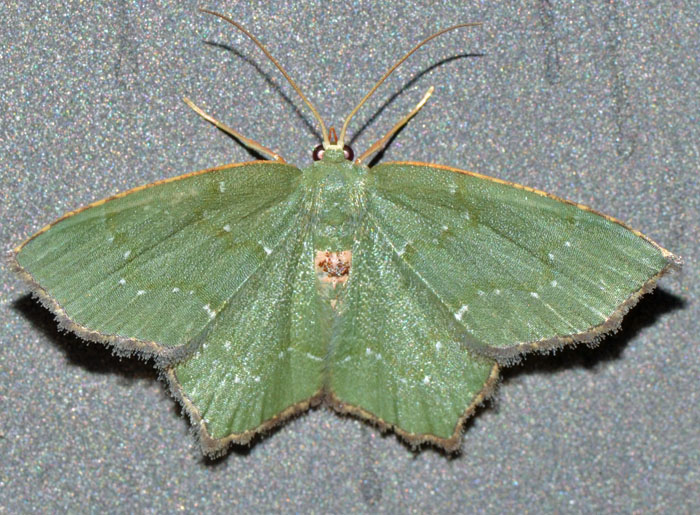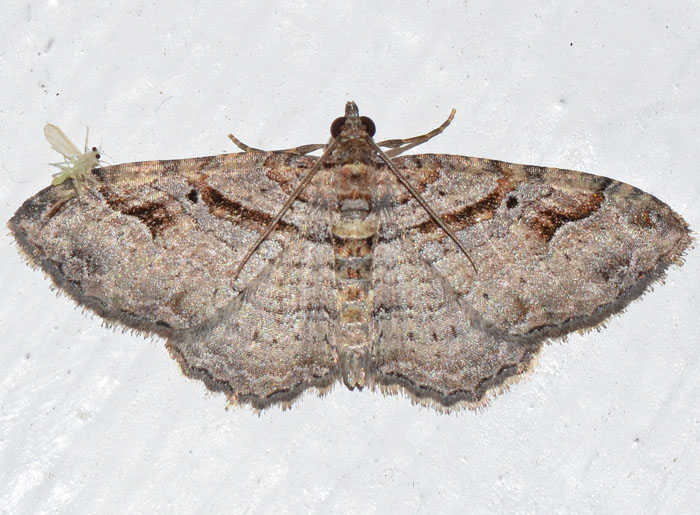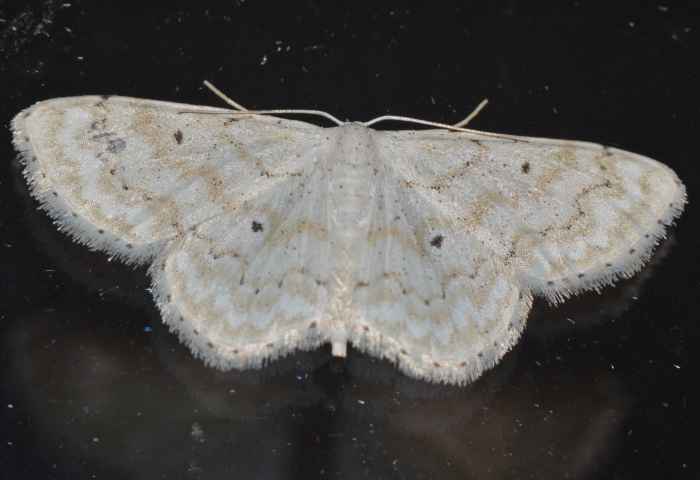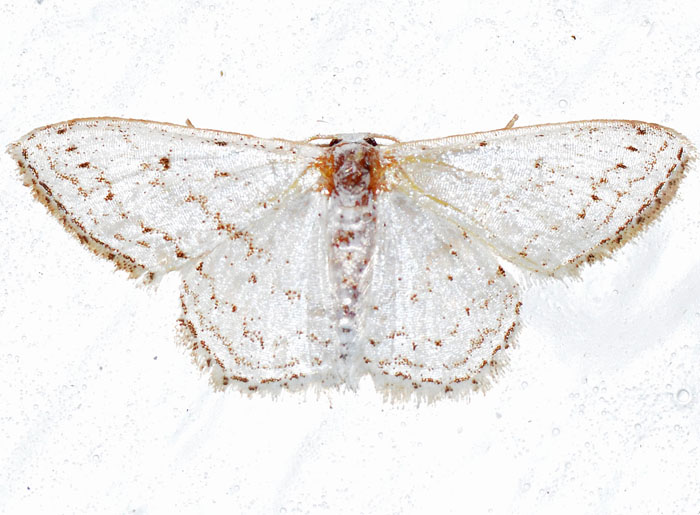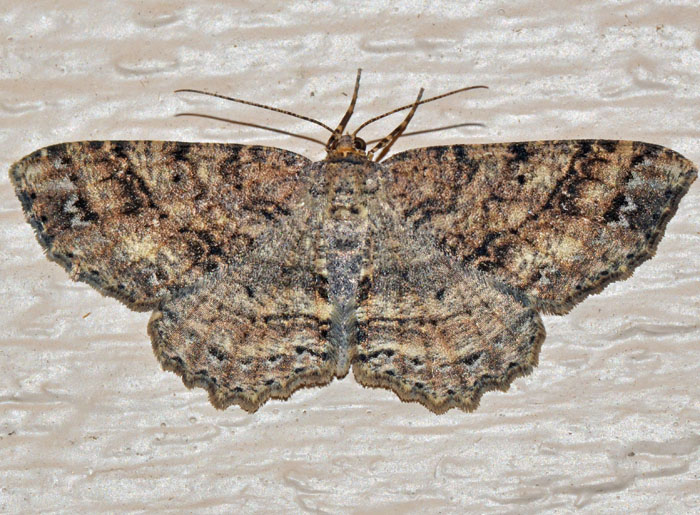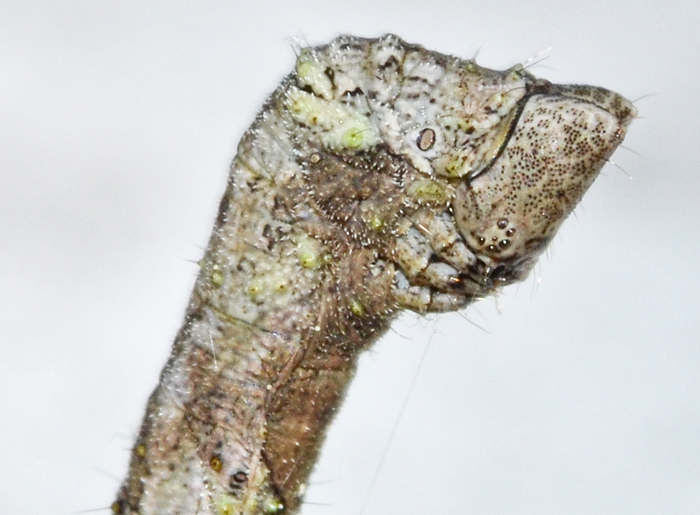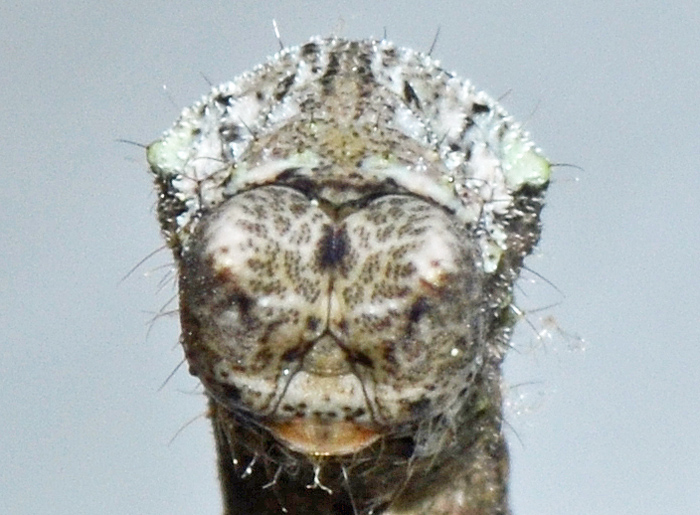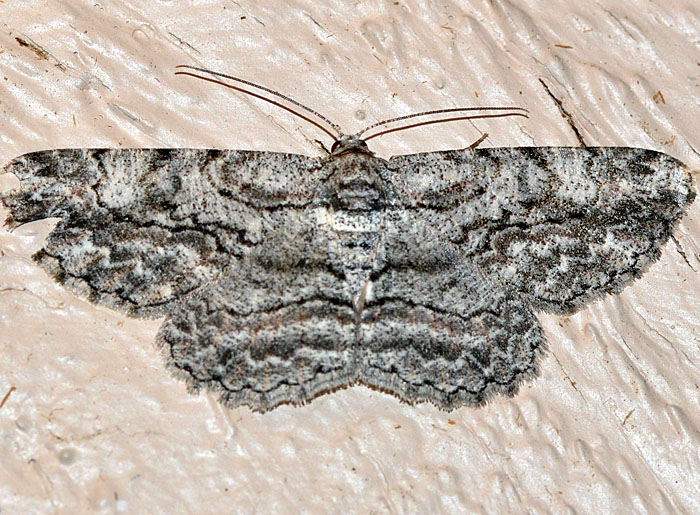 Anavitrinella pampinaria - Hodges#6590 (Common Gray). | The Common Gray can be found in most parts of North America. The color of its wings varies from medium gray to light yellowish-gray with heavy dark gray or black mottling. The larvae are light brown and mimic twigs. They are known to feed on apple, ash, clover, elm, pear, poplar, and willow.
bug guide (this photo): http://bugguide.net/node/view/995893 | ||
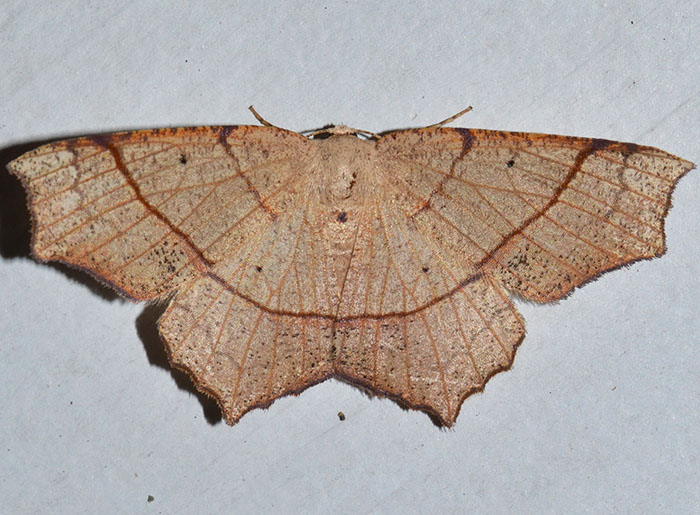 Besma quercivoraria - Hodges#6885 (Oak Besma). | A flying leaf! This fairly large moth looked rather pretty and was clearly attracted by our porch light. Its larvae are twig mimics and feed on leaves of oak, elm, poplar, willow, white spruce, and paper birch. Adults are sexually dimorphic but I'm not sure whether this is a female or a male (the former are paler and less boldly patterned). bug guide (this photo): http://bugguide.net/node/view/1362869 | ||
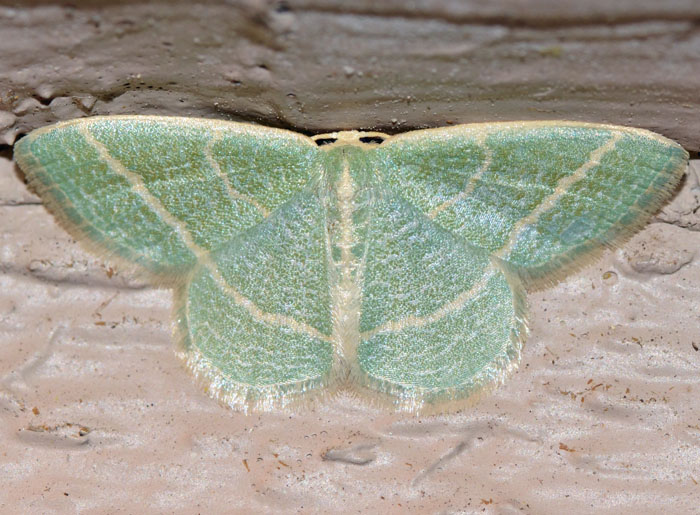 Chlorochlamys chloroleucaria - Hodges#7071 | The first moth entry of 2017. Lynn Scot on bugguide.net describes this species as follows: "Wings somewhat pale grayish green, sometimes appearing slightly bluish. On the forewing, the cream-colored antemedial and postmedial lines are clearly defined, but somewhat variable as to straightness. On the hindwing, only the postmedial line is present. A pale terminal line is sometimes evident. The fringe is also pale, sometimes a paler shade of the blue-green of the wing. The surface texture of the wing often appears somewhat alligatored." bug guide (this photo): http://bugguide.net/node/view/1346162 | ||
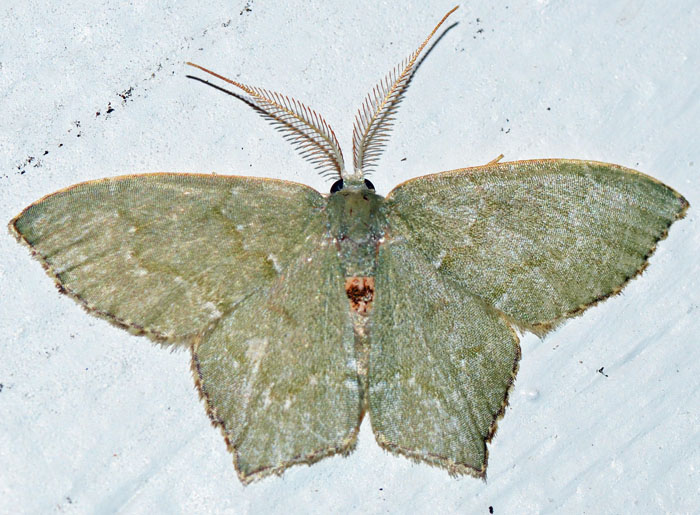 Chloropteryx tepperaria - Hodges#7075 | The Southern US is home to the Angle-winged Emerald and can be found all year round in Florida. The genus has three species in North America. The small photo was taken on 08/07/14 and possibly shows a female.
bug guide (this photo): http://bugguide.net/node/view/973649 | ||
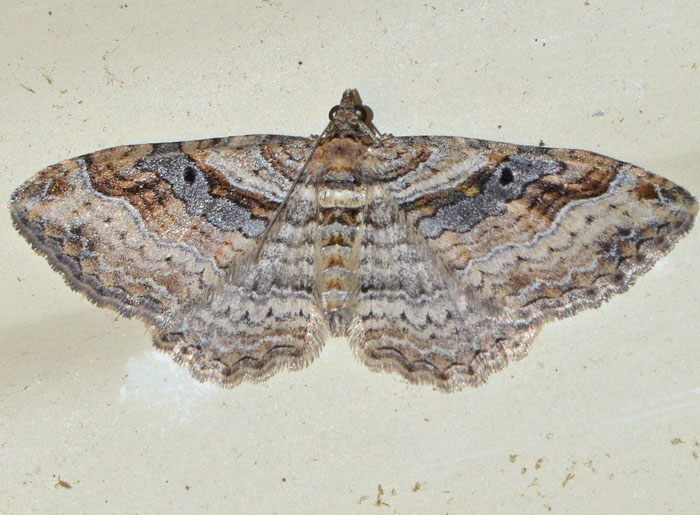 Costaconvexa centrostrigaria - Hodges#7416 | Found in most parts of North America where it is the only species in this genus. The Bent-line Carpet is also an introduced species in the UK, the Canary Islands, the Azores, and Madeira. It is easily confused with Orthonama obstipata but doesn't have an blackish dash at the apex of forewing. The small photo (06/03/15) shows a different specimen.
bug guide (this photo): http://bugguide.net/node/view/1067230 wikipedia: http://en.wikipedia.org/wiki/Costaconvexa_centrostrigaria | ||
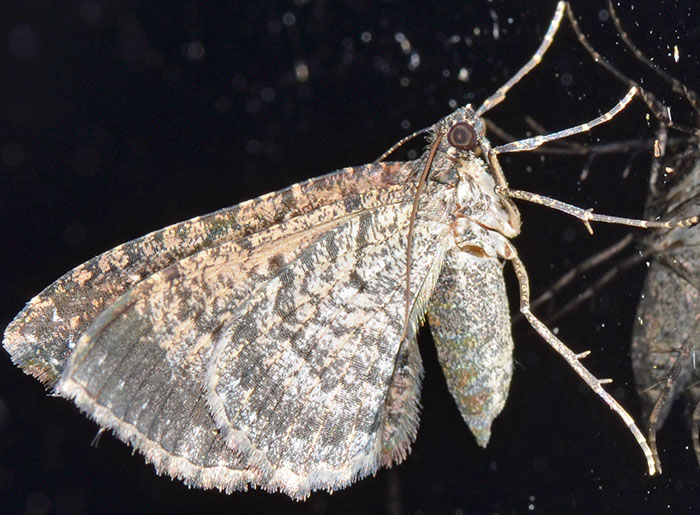 Disclisioprocta stellata - Hodges#7417 (Somber Carpet). | The Somber Carpet is found in sub-Saharan Africa and in the Americas it ranges from Bolivia and Brazil to Mexico and the United States, where its range extends into eastern Canada. In Hawaii, where D. stellata was introduced in 1993, the larvae are known as Bougainvillea Loopers. bug guide (this photo): https://bugguide.net/node/view/977429 | ||
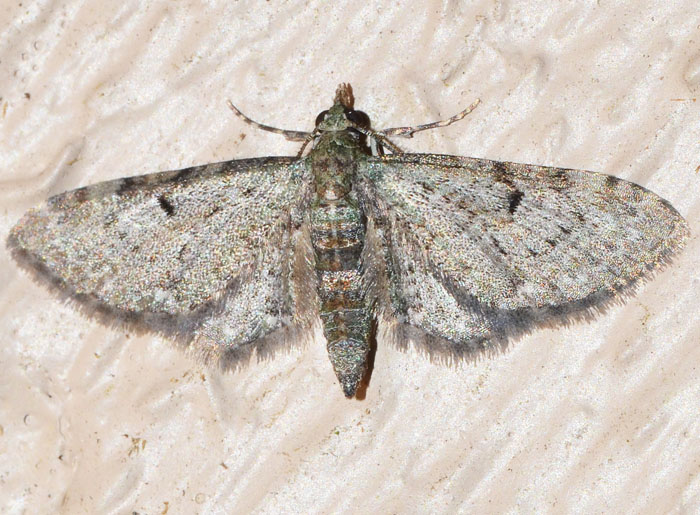 Eupithecia sp.. | Eupithecia has over 1400 species worldwide and is by far the largest moth genus. Pugs are typically small with muted colors and species-level identification may require dissection. As a group they are easily identified by their narrow wings held flat at a right angle to the body with the hindwings almost hidden behind the forewings. bug guide (this photo): http://bugguide.net/node/view/1058810 wikipedia: http://en.wikipedia.org/wiki/Eupithecia | ||
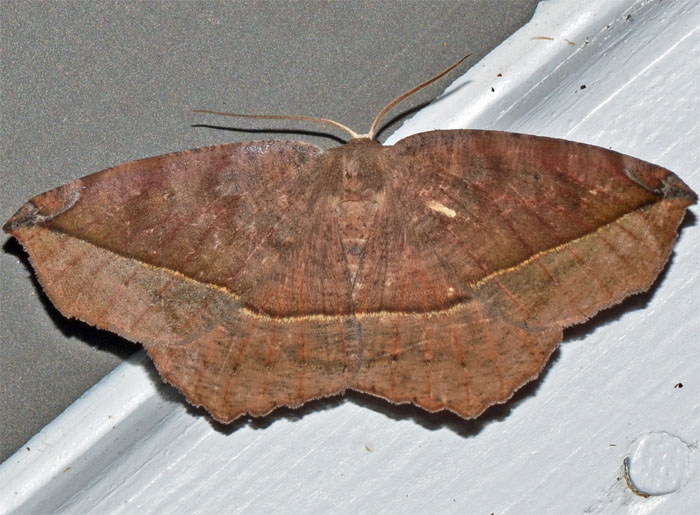 Eutrapela clemataria - Hodges#6966 | A big, brown moth. The males have a wingspan of up 5.5 cm and females are even larger than the males. In the South these adults can be found throughout the entire year. bug guide (this photo): http://bugguide.net/node/view/981329 | ||
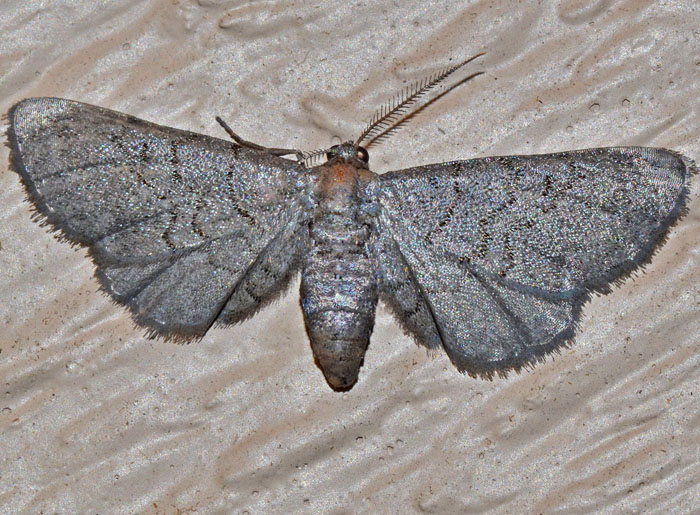 Exelis pyrolaria - Hodges#6478 (Fine-lined Gray Moth). | This unusually gray moth is Exelis pyrolaria. The photo shows most likely a female. The wing span is approximately 2 cm. The second link is to a rather technical publication on this genus. bug guide (this photo): http://bugguide.net/node/view/1125573 American Museum of Natural History: http://digitallibrary.amnh.org/handle/2246/3940 | ||
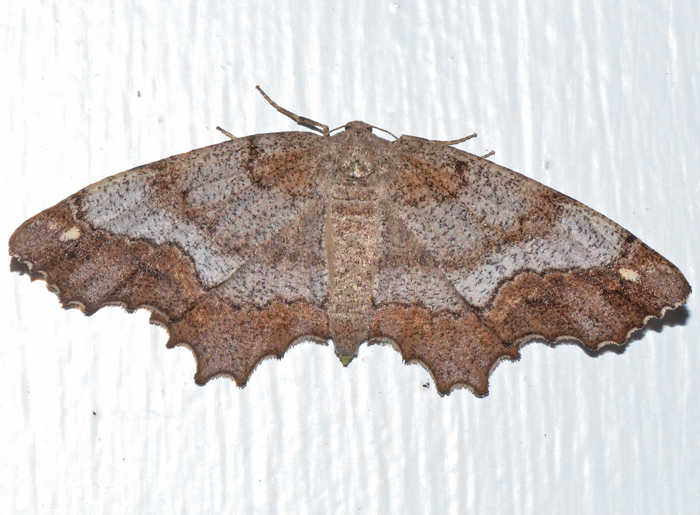 Hypagyrtis unipunctata - Hodges#6654 | Also called called 'White Spot' in the UK, this highly variable moth is not very common in Florida. Its habitat are deciduous and mixed woods. Larvae are twig mimics and have a mottled gray appearance. They overwinter exposed on tree bark and branches. The wingspan of this specimen was about 4 cm. bug guide (this photo): http://bugguide.net/node/view/1205792 | ||
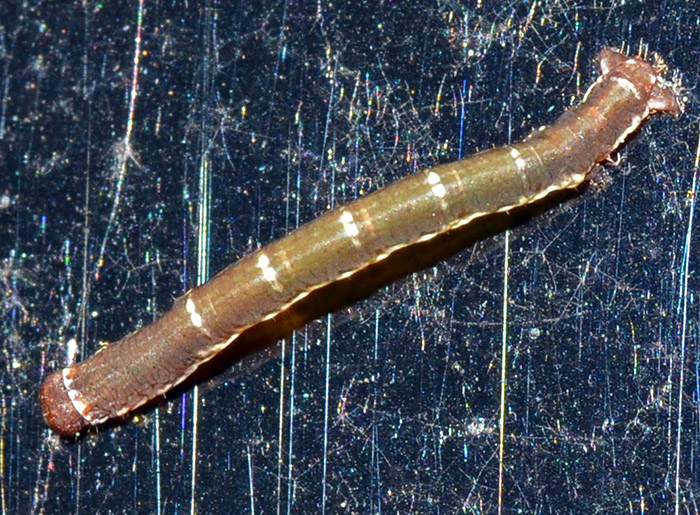 Hypagyrtis unipunctata - Hodges#6654 | The caterpillars of the One-spotted Variant have a cylindrical body, mottled in grays and reddish-brown with faint longitudinal streaking. They lack any conspicuous warts, humps, or other distinctive characters. bug guide (this photo): https://bugguide.net/node/view/1509565 | ||
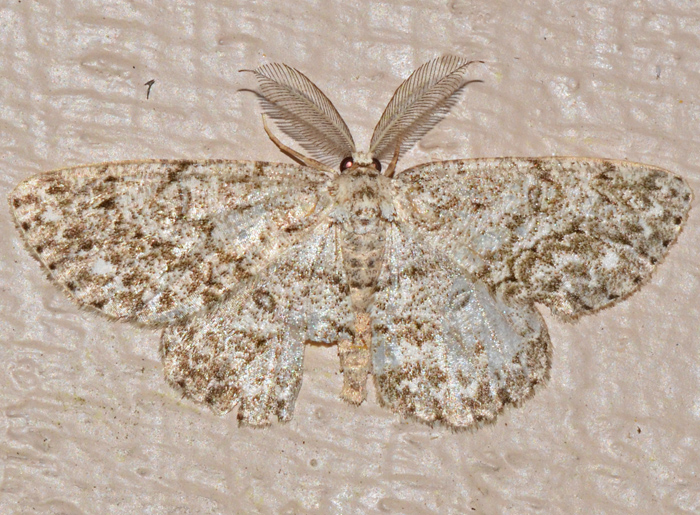 Hypomecis umbrosaria - Hodges#6439 (Umber Moth) ♂. | The antennae of male specimens of H. umbrosaria have 42-49 segments. The main color of this moth seems to vary from beige to light or dark gray. This species is difficult to distinguish from H. gnophoraria and the uncommon H. buchholzaria.
bug guide (this photo): http://bugguide.net/node/view/1204478 | ||
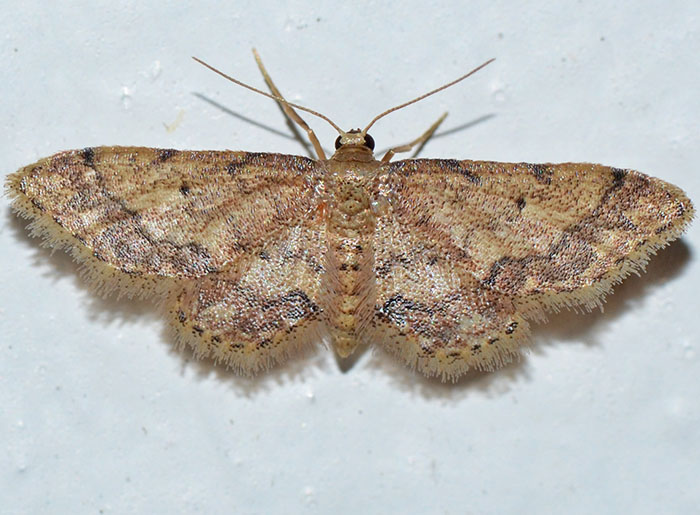 Idaea celtima - Hodges#7109. | ... and yet another Idaea moth. The wingspan of this moth is about 1/2". bug guide (this photo): http://bugguide.net/node/view/1364226 | ||
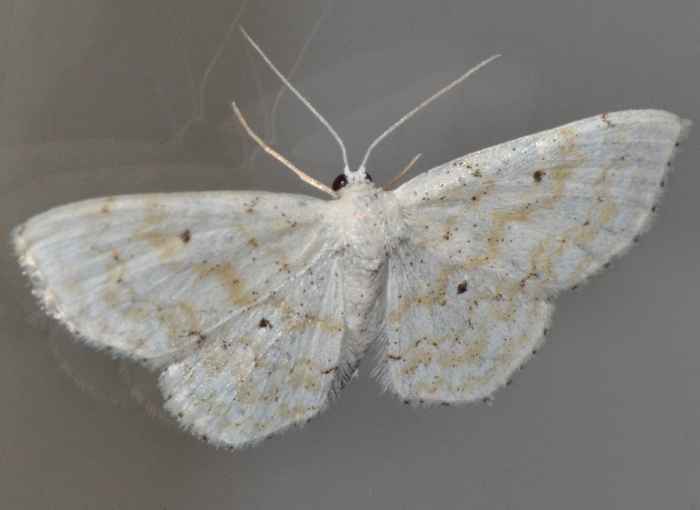 Idaea obfusaria - Hodges#7123 (Rippled Wave). | This Geometrid moth is a Rippled Wave (Idaea obfusaria). Its forewings are crossed by three brownish wavy bands. Each wing has a central large black spot. Caterpillar host plants include clover and dandelion. The small photo was taken 24 h later.
bug guide (this photo): http://bugguide.net/node/view/570608 butterfliesandmoths.org: http://www.butterfliesandmoths.org/species/Idaea-obfusaria Heitzman J. Res. Lepidop. 12, 145, 1973: http://lepidopteraresearchfoundation.org/journals/12/PDF12/12-145.pdf | ||
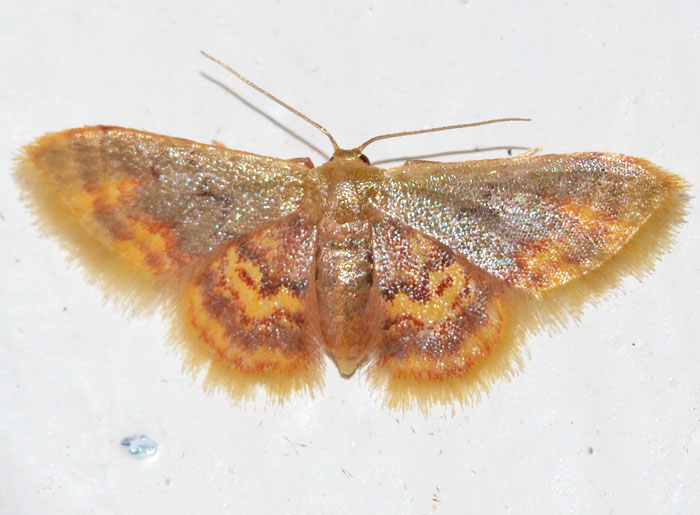 Idaea scintillularia - Hodges#7105 | Another Idaea moth. This species is rather small and overall has a shiny, glass-like appearance. bug guide (this photo): http://bugguide.net/node/view/1066954 | ||
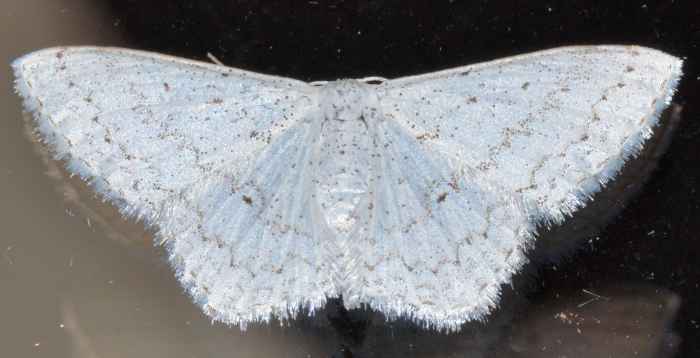 Idaea tacturata - Hodges#7122 (Dot-lined Wave). | The Dot-lined Wave (Idaea tacturata) can be found in the Southeastern US and Texas. The dotted or zigzag lines on the forwing continue on to the hindwing. In addition, it features tiny black dots on all wings, and some scattered blackish scales. The small photo was taken on 08/20/14 around 10 pm.
bug guide (this photo): http://bugguide.net/node/view/631661 | ||
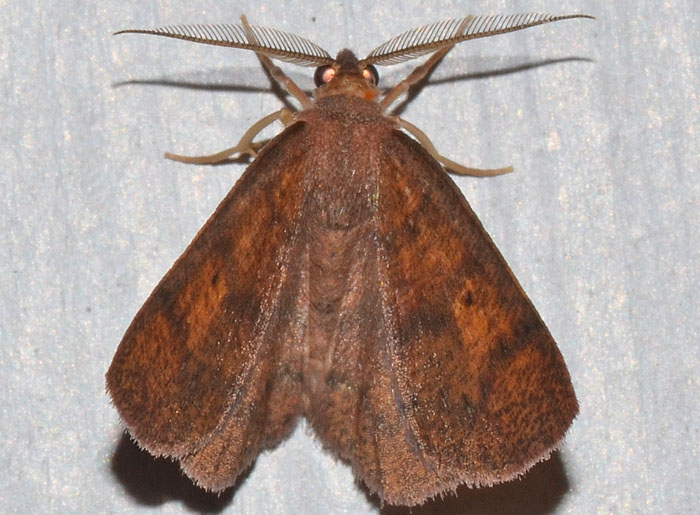 Ilecta intractata - Hodges#6711 | With this photo I now have officially 500 different species identified in my backyard. I thought of waiting for a more spectacular species but hey, isn't it all about little brown moths?
bug guide (these photos): http://bugguide.net/node/view/1067234 | ||
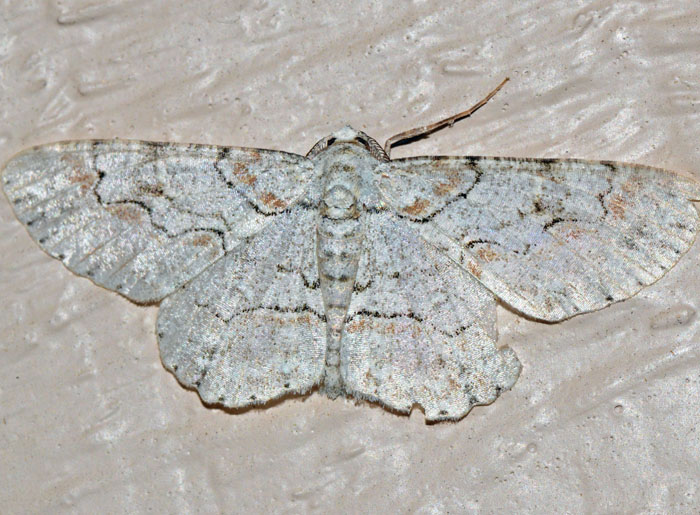 Iridopsis defectaria - Hodges#6586 | Found throughout North America, this is one of the 21 Iridopsis species. Identification down to the species level is difficult due to color variations within a given species. However, it seems likely that this one is I. defectaria. bug guide (this photo): http://bugguide.net/node/view/1056752 | ||
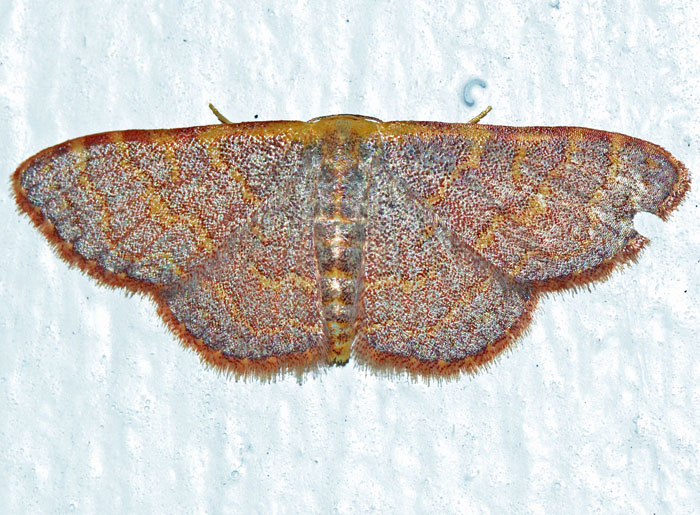 Leptostales pannaria - Hodges#7173 | This pale reddish moth is Leptostales pannaria. It can be found in the Southeastern US and Texas. bug guide (this photo): http://bugguide.net/node/view/998183 | ||
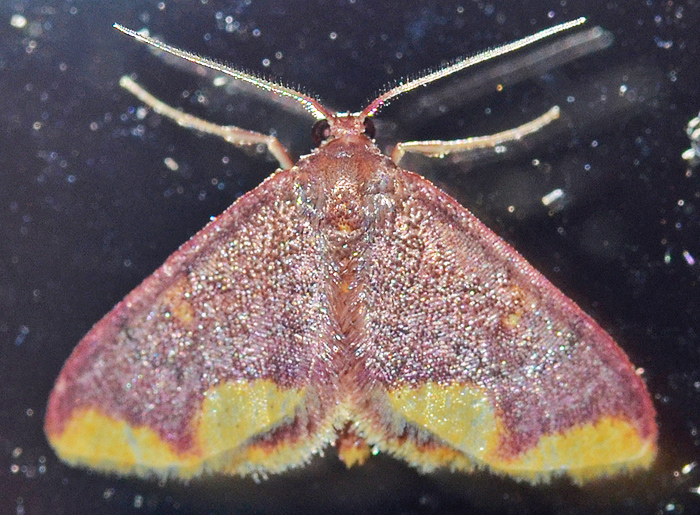 Lophosis labeculata - Hodges#7181 (Stained Lophosis) ♂. | The wings of males are shiny purple with a broad yellow, terminal band separated from the purple by a sharp dividing line. The female (not shown) has similar wings but also a broad yellow AM band. In addition, the terminal band is separated from the purple by a diffuse, broken border. bug guide (this photo): http://bugguide.net/node/view/1243190 | ||
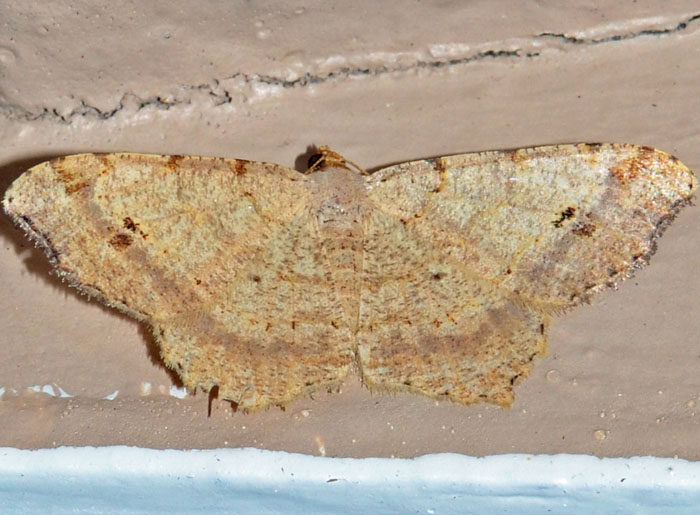 Macaria bisignata. | This pale brown moth has a wingspan of about one inch. It's larvae feed almost exclusively on pine, so they should be quite happy in our neighborhood. The four dark, brownish spots along the front edge of the forewing (this edge is called costa) are characteristic.
bug guide (this photo): http://bugguide.net/node/view/980620 | ||
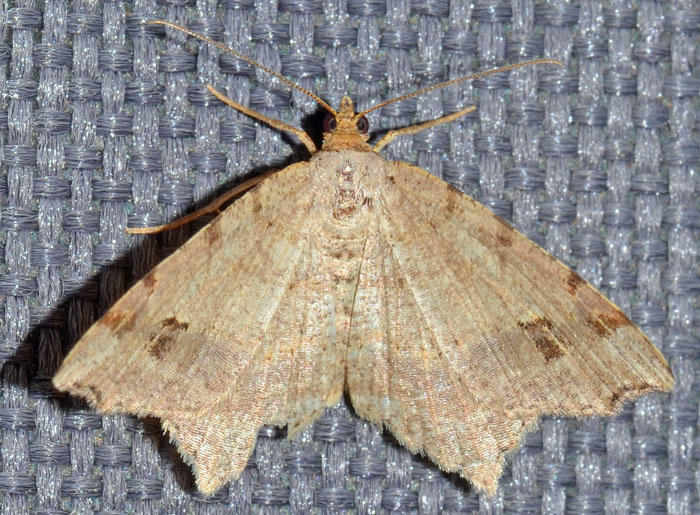 Macaria sp.. | This moth is possibly M. aequiferaria also known as Woody Angle. The many species in the Macaria genus are all brownish or gray. The larvae are typically associated with the leaves of coniferous trees. In Greek mythology, Macaria is the daughter of Hercules. bug guide (this photo): http://bugguide.net/node/view/1066540 | ||
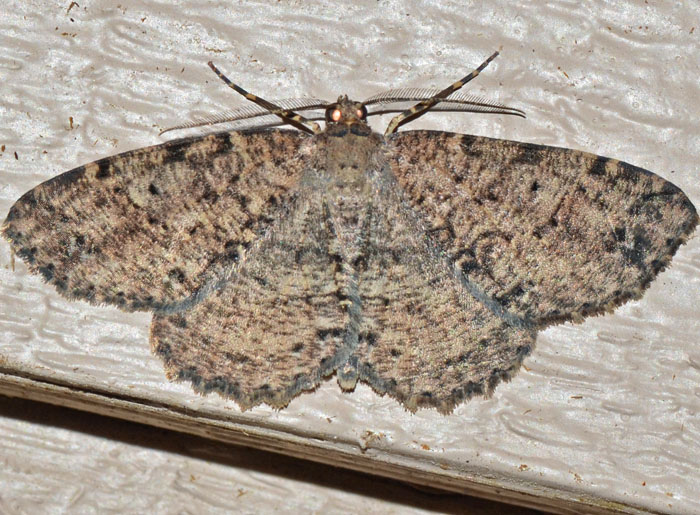 Melanolophia canadaria - Hodges#6620 | Canadian Melanolophia? I hope this moth has a proper visa! The genus has five species in North America. It has mottled, brownish or grayish wings and often a sea-gull like, dark feature near the center (which seems less obvious in this specimen). The larvae feed on a various trees including pines and oaks. The small photo below shows a female (photo from 05/13/15).
bug guide (large photo): http://bugguide.net/node/view/977430 bug guide (small photo): https://bugguide.net/node/view/1066957 | ||
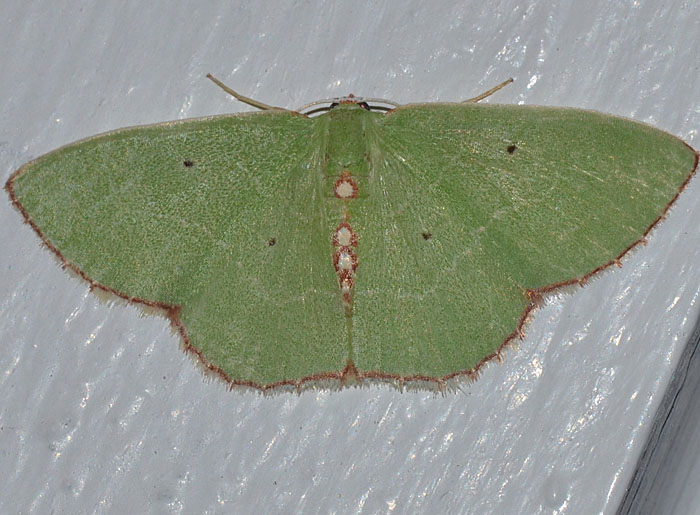 Nemoria sp.. | Nemus is the Latin word for pasture or grove and the source of this moth's name. The genus Nemoria has over 30 species of which some show seasonal polyphenism giving rise to populations of brown or green moths. bug guide (this photo): http://bugguide.net/node/view/1100820 Explanation of Seasonal Polyphenism: http://moths.friendscentral.org/polyphenism1.htm | ||
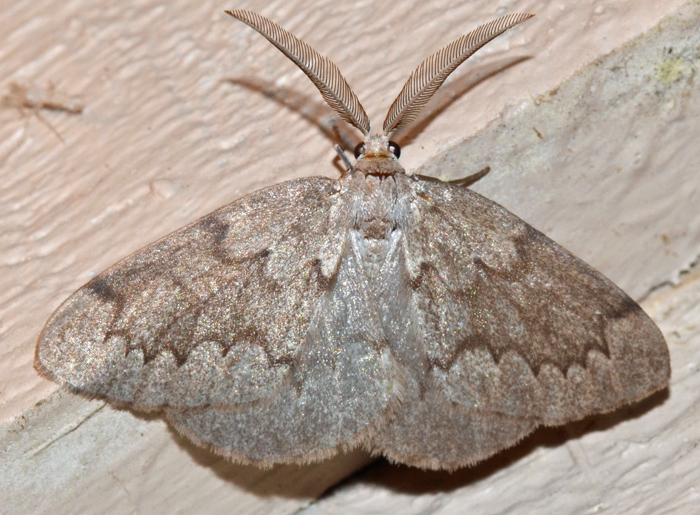 Nepytia sp.. | Nepytia can be found in conifereous and mixed forests throughout North America where the genus has twelve species. Based on location and month, an expert suggested that this might be Nepytia semiclusaria - Hodges#6908 (Southern Nepytia). bug guide (this photo): http://bugguide.net/node/view/1224529 | ||
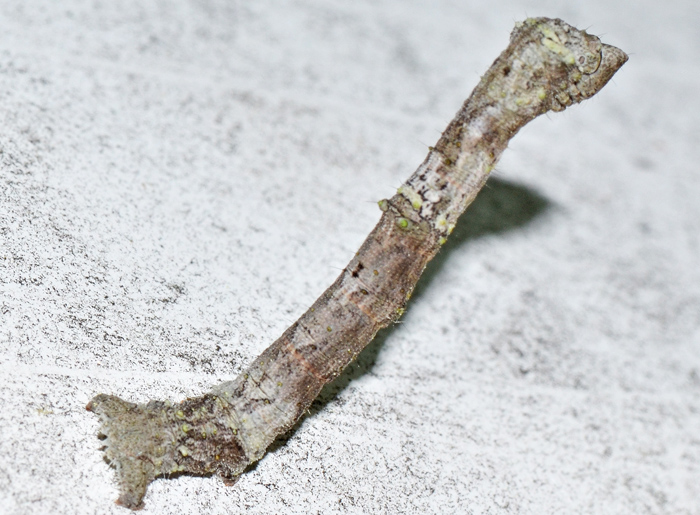 Phaeoura quernaria - Hodges#6763 (Oak Beauty) - imm. | The larvae of the Oak Beauty feed on leaves of a variety of deciduous trees including birch, cherry, elm, hawthorn, oak, poplar, and willow. Their body is short and stout for a geometrid caterpillar mottled with browns and grays. Each spot on the head is made of ten to 20 speckles and the body has raised warts on the second and eighth abdominal segments and ventral warts on the third.
bug guide (these photos): https://bugguide.net/node/view/1211655 | ||
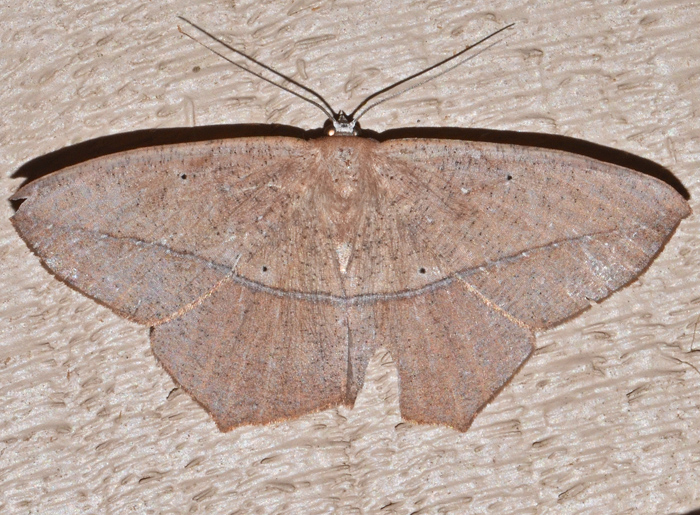 Prochoerodes lineola - Hodges#6982 | The wing span of this moth was about 4-5 cm and it was very excited about the lamp at our front door. bug guide (this photo): http://bugguide.net/node/view/1208103 | ||
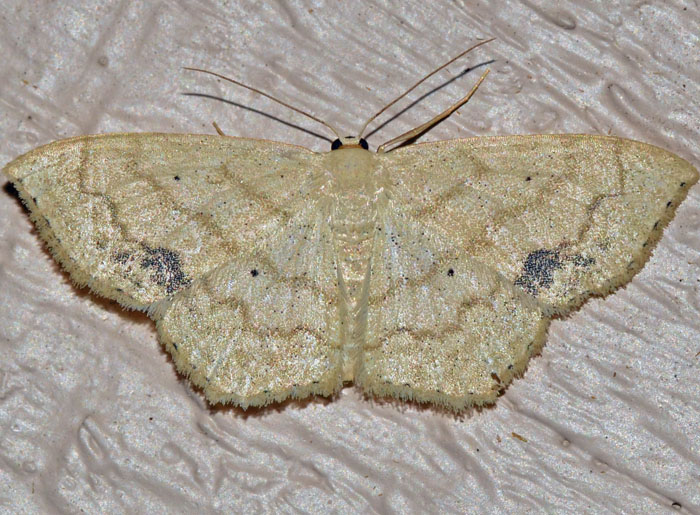 Scopula limboundata - Hodges#7159 (Large Lace-border). | The outer margins of the wings are angular and the background color of the wings is pale or yellowish white, speckled with brownish yellow dots and crossed by 3 or 4 wavy brownish-yellow lines. It has also a small black discal spot near the middle of all wings. The caterpillars feed on apple, blueberry, clover, dandelion, meadow-beauty, and black cherry. bug guide (this photo): http://bugguide.net/node/view/983123 | ||
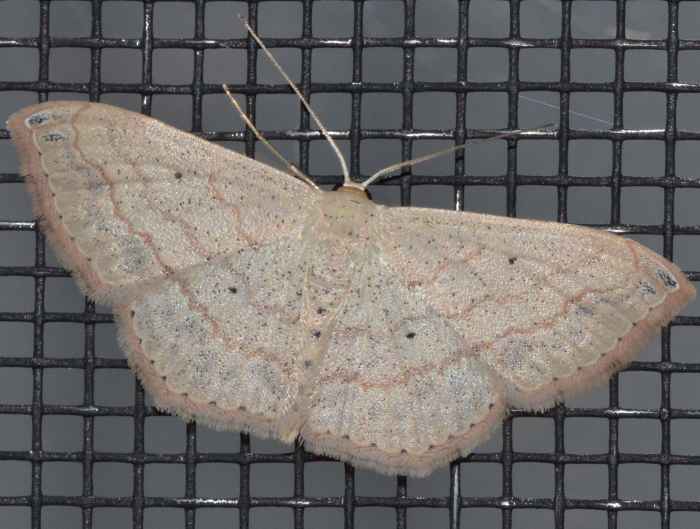 Scopula umbilicata - Hodges#7156 (Swag-Lined Wave). | Another pale brownish moth. This is a Swag-Lined Wave (Scopula umbilicata). A brown spot at the apex of the forewing is characteristic for this moth. There are 24 Scopula species in North America. bug guide (this photo): http://bugguide.net/node/view/584618 | ||
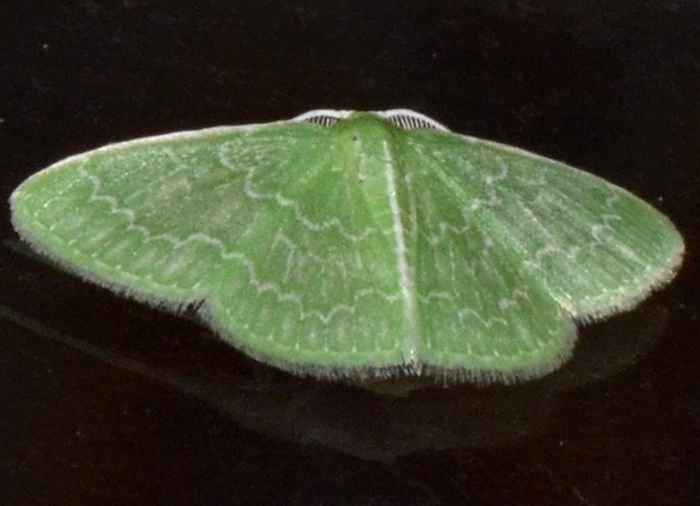 Synchlora frondaria - Hodges#7059 | This green moth is a Southern Emerald Moth (Synchlora frondaria). It came to the light of a window. Its larvae are very interesting twig mimics. They are highly variable as they decorate themselves with plant material. The genus has 12 species north of Mexico. The small photo shows a different example that I found on 3/26/16.
bug guide (this photo): http://bugguide.net/node/view/570267 Canfield et al. Ecol. Entomol., 34, 412, 2009: http://onlinelibrary.wiley.com/doi/10.1111/j.1365-2311.2009.01089.x/pdf | ||
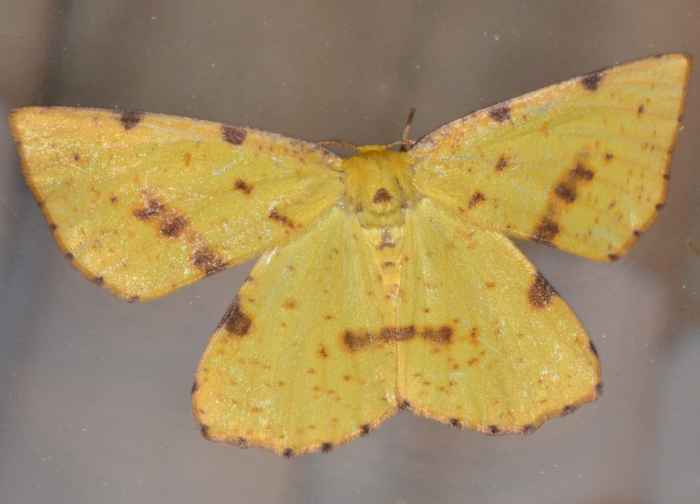 Xanthotype sp.. | The genus Xanthotype has five species in North America. They are indistinguishable unless a genitalic examination is performed. Common names of the species include Crocus and Buttercup Geometer. bug guide (this photo): http://bugguide.net/node/view/584829 |

